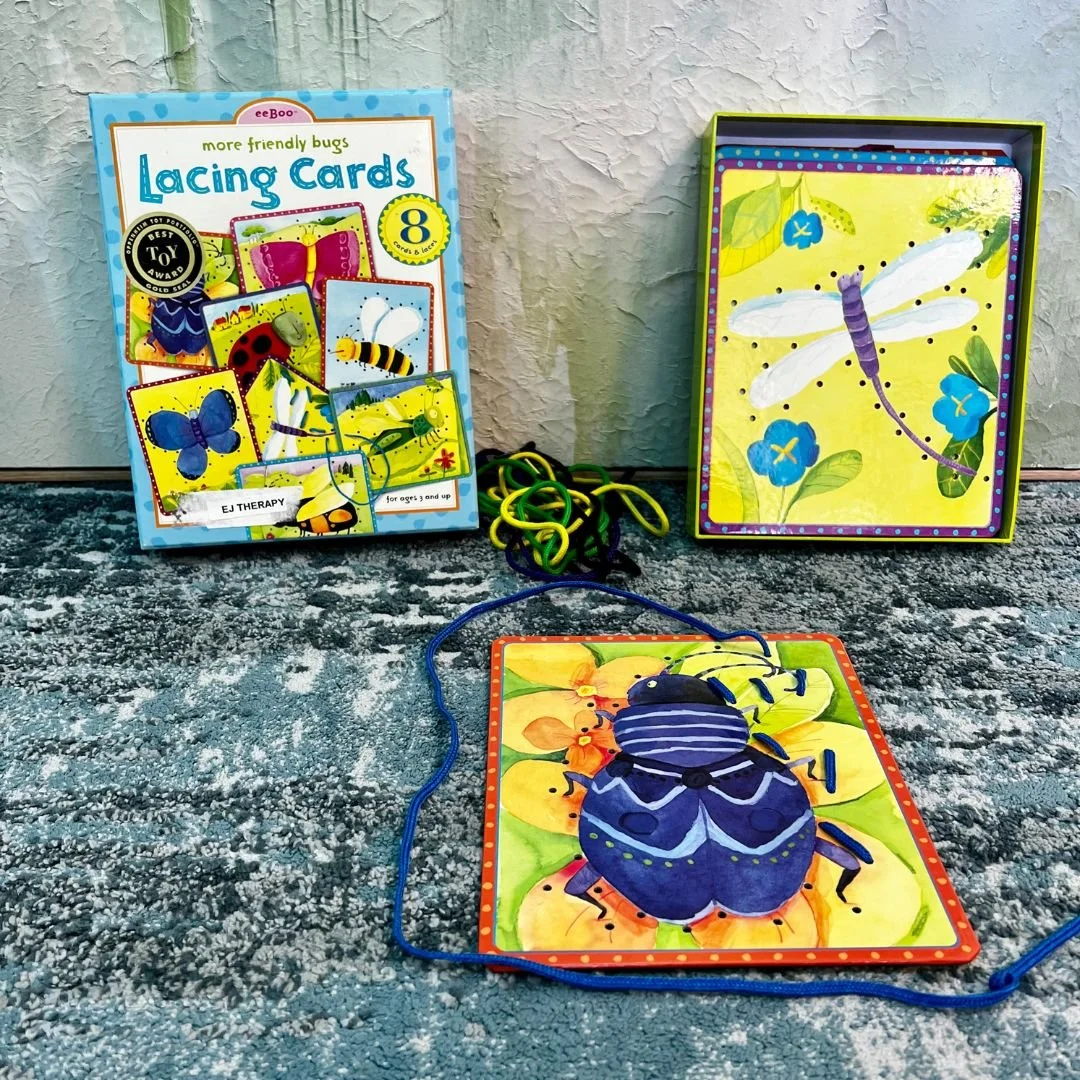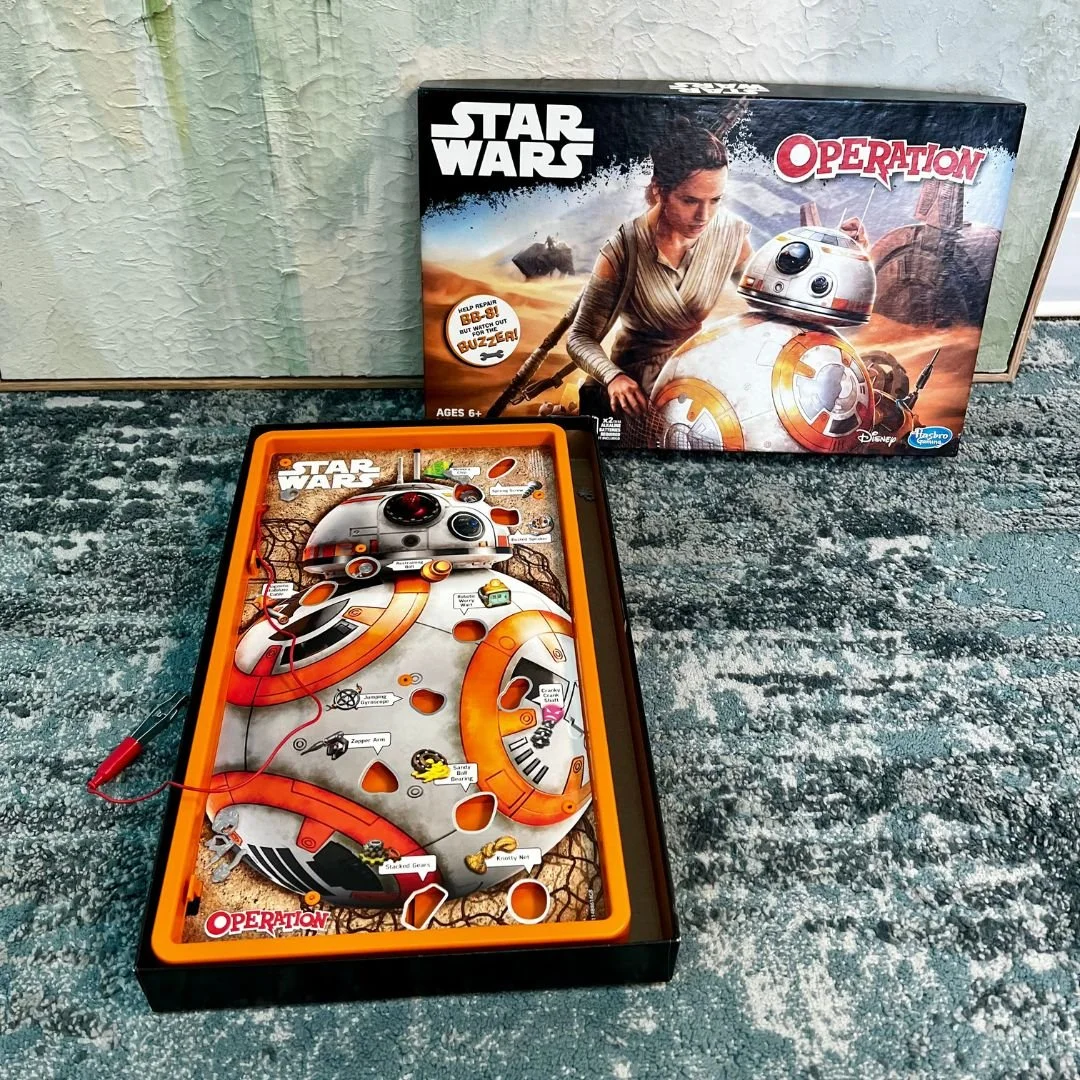Toys to Help with Occupational Skills
Toys can be a valuable tool in occupational therapy for children. Depending on the child's needs and goals, different toys can be used to improve fine motor skills, hand-eye coordination, sensory processing, and more. For example, puzzles can help with problem-solving and cognitive skills, while building blocks can improve hand strength and dexterity. Sensory toys like play dough or kinetic sand can provide tactile stimulation and help with sensory processing. Playing with toys can also encourage social skills and communication, as children may play together and interact with each other. Overall, incorporating toys into occupational therapy can be both fun and effective for children.
We’ve compiled a list of some toys we like to use in the clinic. Please see the list below! :)
Disclosure: Some of the links below are affiliate links. This means that, at zero cost to you, EJ Therapy will earn an affiliate commission if you click through the link and finalize a purchase.
1). Playdoh and playdoh accessories
Our Picks:
Play doh is an all-around great tool for both OT and speech. We use play doh to promote creativity, improve fine motor skills, build finger and hand strength, work on manipulation, and build hand-eye coordination. Have your child roll the dough into snakes and then practice cutting with scissors by snipping up the snakes. Make letters and shapes out of the play dough for even more practice.
2). Sensory or Poke-a-dot books
Our Picks:
Poke-a-dot books are great children’s books that have interactive elements. You know how satisfying it is to pop bubble wrap? Well these books have dots that you can press, making a “click” or “pop” noise. These books help your child learn because they encourage multi-sensory learning. The child can follow along and pop the dots, or you can have them describe the pictures before they’re allowed to pop the dots.
You also don’t have to necessarily buy the poke-a-dot book brand to get great interactive elements in books. Feel free to look up sensory books and see what strikes your fancy!
3). Critter Clinic
Our Picks:
You can also find the critter clinic at target for a cheaper price.
The critter clinic is a really fun and cute toy that is good for both OT and speech! It’s really great for challenging the kids and really sparking their curiosity.
Since there are so many manipulative elements to this toy, it is also great for fine motor skills. Your child is working on pincer grasp, hand-eye coordination, turning keys, manipulating small objects, and more.
4). Poppers
Our Picks:
The cow popper is a clinic favorite among the kids. You squeeze the cow to launch a foam ball out of its mouth. This is excellent for working on hand grasp. You also have the pincer grasp and in-hand manipulation when arranging the balls. It’s even great for gross motor work, as the child has to retrieve the ball.
5). Fine Motor Games
The apple picking game shown in the picture is not found on amazon but is linked here. It is great for scissor skills, although this game focuses on much more than just that. The apple tree can be propped up or laid flat on a surface. There are scissor scoops and bird tweezers where a child can pick apples from the tree or off the ground. There are little worms at the base of the apple tree that a child can pick up with the bird tweezers, or work on placing the worms back into the holes. The baskets are for the different colored apples where your child can separate the apples by color. There is so much more to this game, so feel free to check it out! The maker of the toy is a brand called Hungry Cutters. They have a bunch of great toys that target fine motor skills.
6). Lacing Cards
Our Picks:
Lacing cards are an excellent tool for occupational therapy because they enhance a wide range of skills. By using lacing cards, children can improve their hand-eye coordination, fine motor skills, and dexterity. The repetitive action of threading the cards also helps to develop bilateral coordination and visual perceptual skills. Additionally, lacing cards can improve attention span, concentration, and problem-solving abilities. Overall, using lacing cards in occupational therapy can help individuals to improve their physical and cognitive abilities in a fun and engaging way.
7). Operation
Our Picks:
The game Operation is an excellent tool for occupational therapy because it helps to improve fine motor skills, hand-eye coordination, and visual perception. The game requires players to use tweezers to remove small objects from designated areas, which can be especially helpful for individuals recovering from hand injuries or surgeries. Additionally, the game can be adjusted to increase or decrease the level of difficulty, making it a versatile tool for therapists to use with patients of varying abilities. The game also provides a fun and engaging way to work on these skills, which can help motivate patients to participate in therapy sessions. This is a fun game that can be used to incorporate a fun and effective tool into their treatment plans.
8). Squigz
Our Picks:
Squigz, which are suction toys, are an excellent tool and toy for kids. These toys help develop fine motor skills, hand-eye coordination, and grip strength, which are essential for performing daily tasks. The suction cups provide resistance, allowing children to build up their muscles while engaging in fun and interactive play. Additionally, suction toys can be used to promote sensory exploration and problem-solving skills. Overall, these toys are a fun and effective way to support children's development and enhance their occupational therapy experience.








